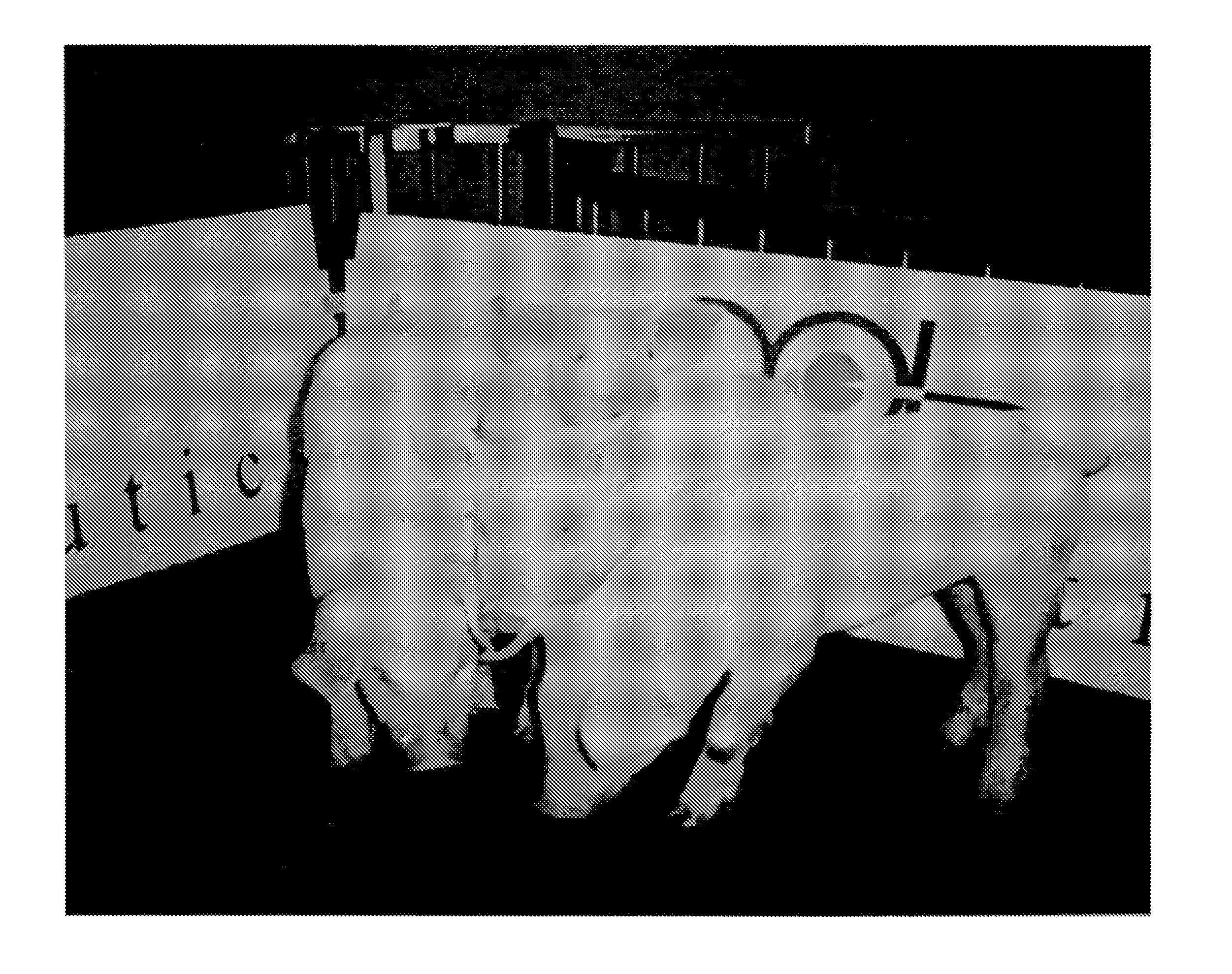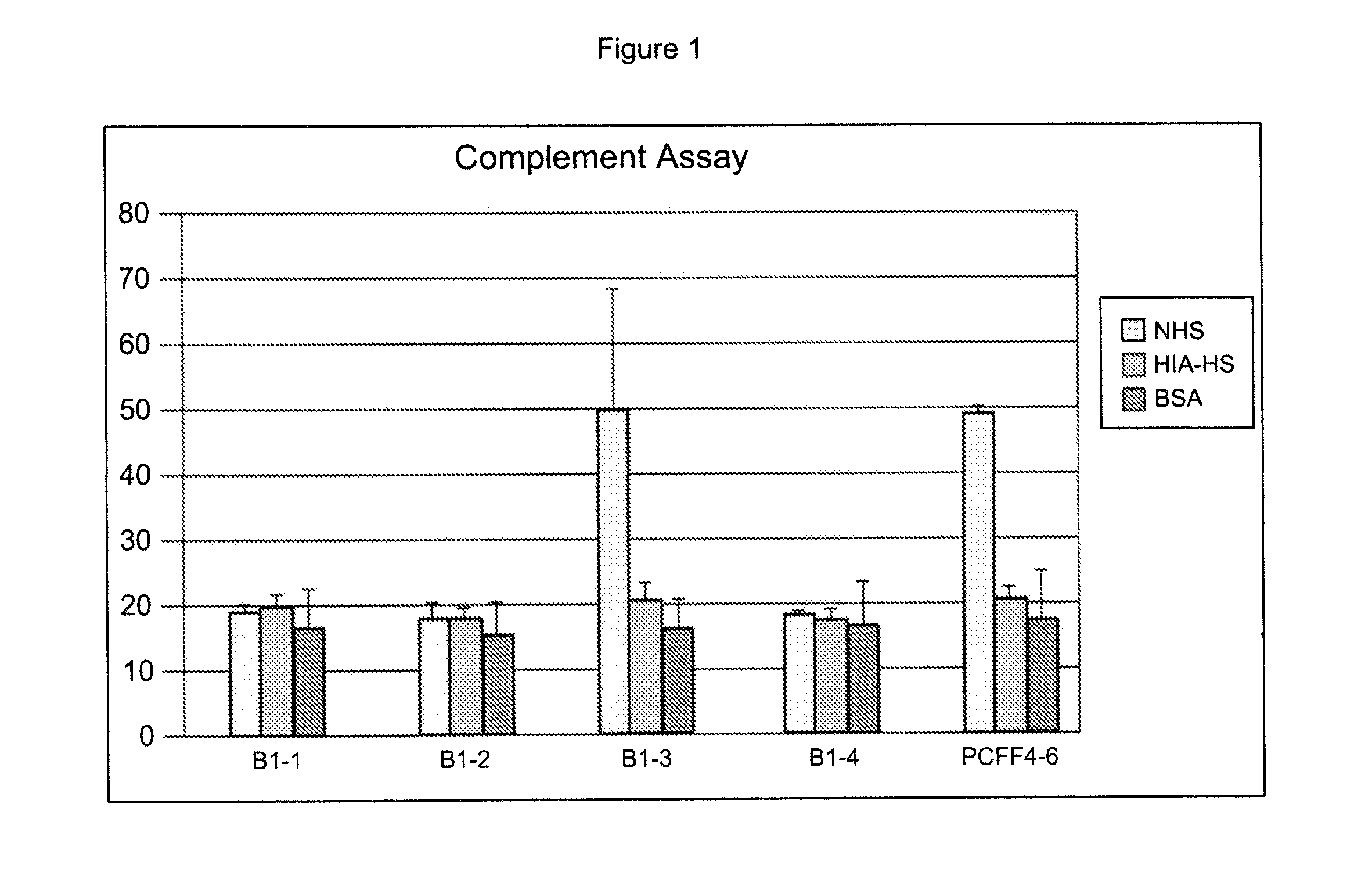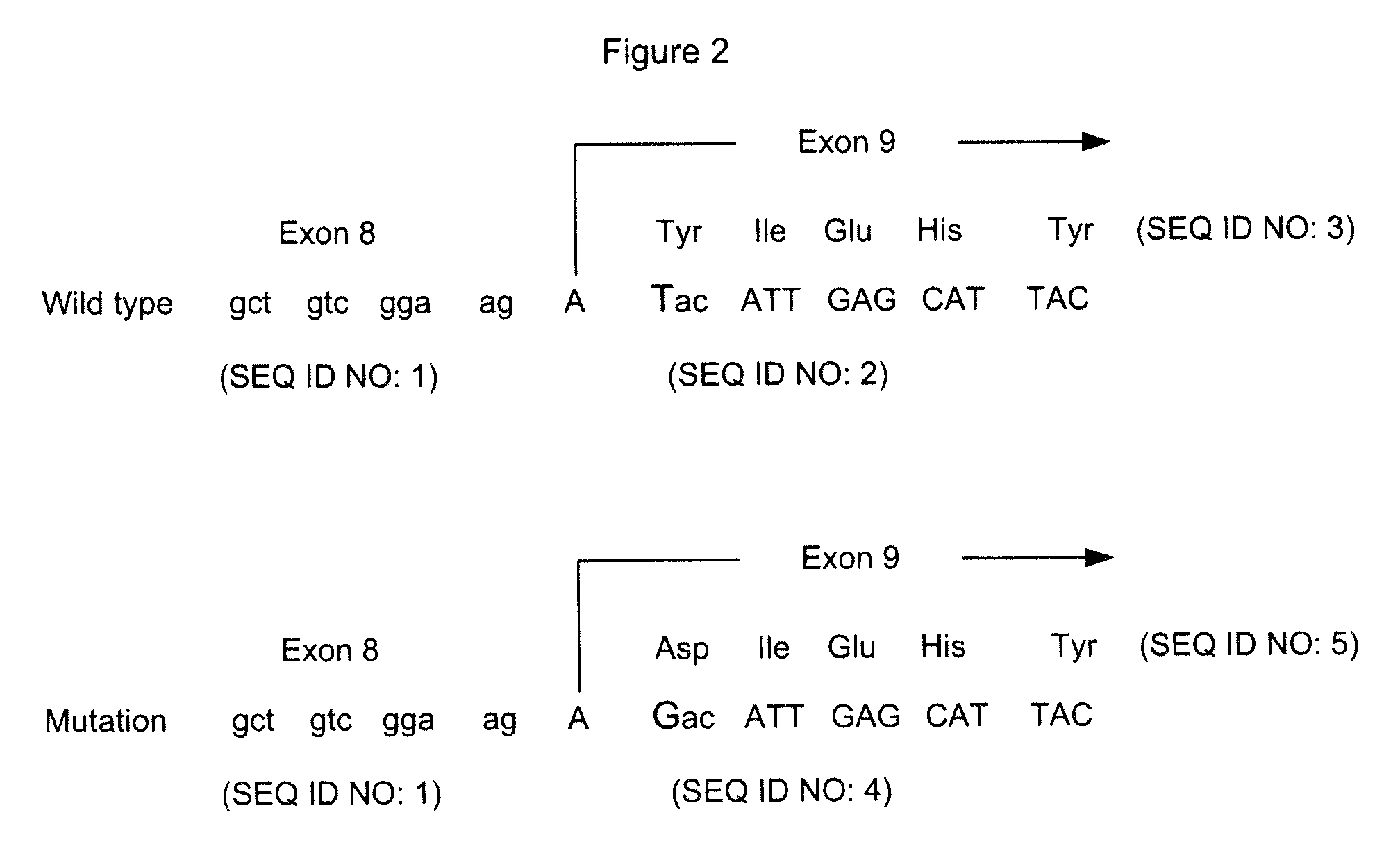Porcine Animals Lacking Any Expression of Functional Alpha 1,3 Galactosyltransferase
a technology of galactosyltransferase and animal, applied in the field of porcine animals, tissue and organs, can solve the problems of partial reduction of gal epitope numbers, shortening of suitable human donors, and presenting its own set of problems
- Summary
- Abstract
- Description
- Claims
- Application Information
AI Technical Summary
Benefits of technology
Problems solved by technology
Method used
Image
Examples
example 1
Production of Porcine Cells Heterozygous for the Alpha-1,3-GT Gene
[0152]Isolation and Transfection of Primary Porcine Fetal Fibroblasts.
[0153]Fetal fibroblast cells (PCFF4-1 to PCFF4-10) were isolated from 10 fetuses of the same pregnancy at day 33 of gestation. After removing the head and viscera, fetuses were washed with Hanks' balanced salt solution (HBSS; Gibco-BRL, Rockville, Md.), placed in 20 ml of HBSS, and diced with small surgical scissors. The tissue was pelleted and resuspended in 50-ml tubes with 40 ml of DMEM and 100 U / ml collagenase (Gibco-BRL) per fetus. Tubes were incubated for 40 min in a shaking water bath at 37° C. The digested tissue was allowed to settle for 3-4 min and the cell-rich supernatant was transferred to a new 50-ml tube and pelleted. The cells were then resuspended in 40 ml of DMEM containing 10% fetal calf serum (FCS), 1× nonessential amino acids, 1 mM sodium pyruvate and 2 ng / ml bFGF, and seeded into 10 cm. dishes. All cells were cryopreserved upon...
example 2
Production of Porcine Cells Homozygous for the Alpha-1,3-GT Gene
[0163]Heterozygous alpha-1,3-GT knockout fetal fibroblasts, (657A-I11 1-6) cells, were isolated from a day-32 pregnancy as described above (See also Dai et al. Nature Biotechnology 20:451 (2002)). An ATG (start codon)-targeting alpha-1,3-GT knockout vector was constructed (pPL680), which also contained a neo gene, to knock out the second allele of the alpha-1,3-GT gene. These cells were transfected by electroporation with pPL680 and selected for the alpha1,3Gal-negative phenotype with purified C. difficile toxin A (described below).
example 3
Selection with C. Difficile Toxin a for Porcine Cells Homozygous for the Alpha-1,3-GT Gene
[0164]Toxin A Cyototoxicity Curve
[0165]Porcine cells (PCFF4-6) were exposed for 1 hour or overnight to ten-fold serial dilutions of toxin A (0.00001 μg / ml to 10 μg / ml). Cells were cultured in 24 well plates and were incubated with the toxin for 1 hour or overnight at 37° C. The results of this exposure are detailed in Table 2. Clearly, a 1 hour exposure to toxin A at >1 μg / ml resulted in a cytotoxic effect on >90% of the cells. A concentration of toxin A at or slightly above 1 μg / ml therefore was chosen for selection of genetically altered cells.
TABLE 2Toxin A toxicity at 1 hour and overnight exposure[Toxin A],μg / ml1 hour incubationOvernight incubation0100% confluency100% confluency.00001100% confluency100% confluency.0001100% confluency100% confluency.001100% confluency100% confluency.01100% confluency50% confluency, 50% rounded.1 90% confluencySame as 10 ug / ml1>90% rounded Same as 10 ug / ml10A...
PUM
 Login to View More
Login to View More Abstract
Description
Claims
Application Information
 Login to View More
Login to View More - R&D
- Intellectual Property
- Life Sciences
- Materials
- Tech Scout
- Unparalleled Data Quality
- Higher Quality Content
- 60% Fewer Hallucinations
Browse by: Latest US Patents, China's latest patents, Technical Efficacy Thesaurus, Application Domain, Technology Topic, Popular Technical Reports.
© 2025 PatSnap. All rights reserved.Legal|Privacy policy|Modern Slavery Act Transparency Statement|Sitemap|About US| Contact US: help@patsnap.com



